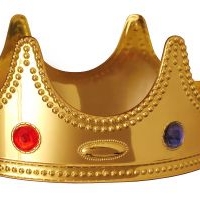How Tech Companies Can Make Gamification Go to Work for Them

During the past year, gamification has been used more and more in business. It’s essentially about using game theory practices in the real world to reward or manipulate behavior.
It started as a way to encourage employees to participate or do necessary tasks by making the work more fun or introducing an element of competition. But gamification is becoming a more central part of business practices as it’s being used increasingly to not only engage employees and customers, but also to measure, analyze, and influence their behaviors.
Once businesses understand these behaviors, they can adjust their products or techniques to respond to the reported behaviors; or, they can determine incentives to change people’s behaviors and still achieve their desired outcomes. This is where gamification stops being, well, simply fun and games and starts generating real value. And it’s time for CIOs to take notice.
The psychology behind why gamification works is interesting but pretty basic. After the most vital needs such as food, shelter, and safety are met, the next motivators on Maslow’s hierarchy that tend to influence people’s behavior are a feeling of belonging, a sense of achievement, and recognition from others. Humans also have an innate predilection toward competition. So, it stands to reason that an employee would be more likely to complete a questionnaire or test a new product if it means his or her name could be splashed up on a leaderboard for their peers to notice.
Mobile apps have had this figured out for a while. It’s why the location-based social networking app Foursquare not only helps you discover restaurants and venues, but also awards points each time you check in somewhere and shows how you stack up against your friends. It designates you as “mayor” of a location if you’re the one who has used the app to check in there the most and gives you the option to post your stats and titles to other social networks. The competitive nature of it makes you want to use the app more—and to share your experience with friends.
So, how can businesses use this information as a motivator? One example of gamification at work is a social program Samsung started called Samsung Nation. Its rewards are similar to those offered by Foursquare: special “badges” that can be unlocked after certain tasks are performed, points on a leaderboard, and the opportunity to interact with friends. But the way people climb the ranks is by watching promotional videos, reviewing products, and participating in Q&As—all of which give valuable feedback to Samsung.
And these little incentives are translating into a lot of engagement. Autodesk, a B2B company that creates 3D design, engineering, and entertainment software, wanted to get people to use their trial more. They created “missions” that rewarded people with points and badges for interacting with the software. After gamifying their strategy, they saw a 10 percent increase in trial downloads and a 40 percent increase in trial usage.
Results like those mean gamification is being taken seriously in business enterprises. Doug Palmer, a principal with Deloitte Consulting LLP, explains why CIOs should get in the game:

